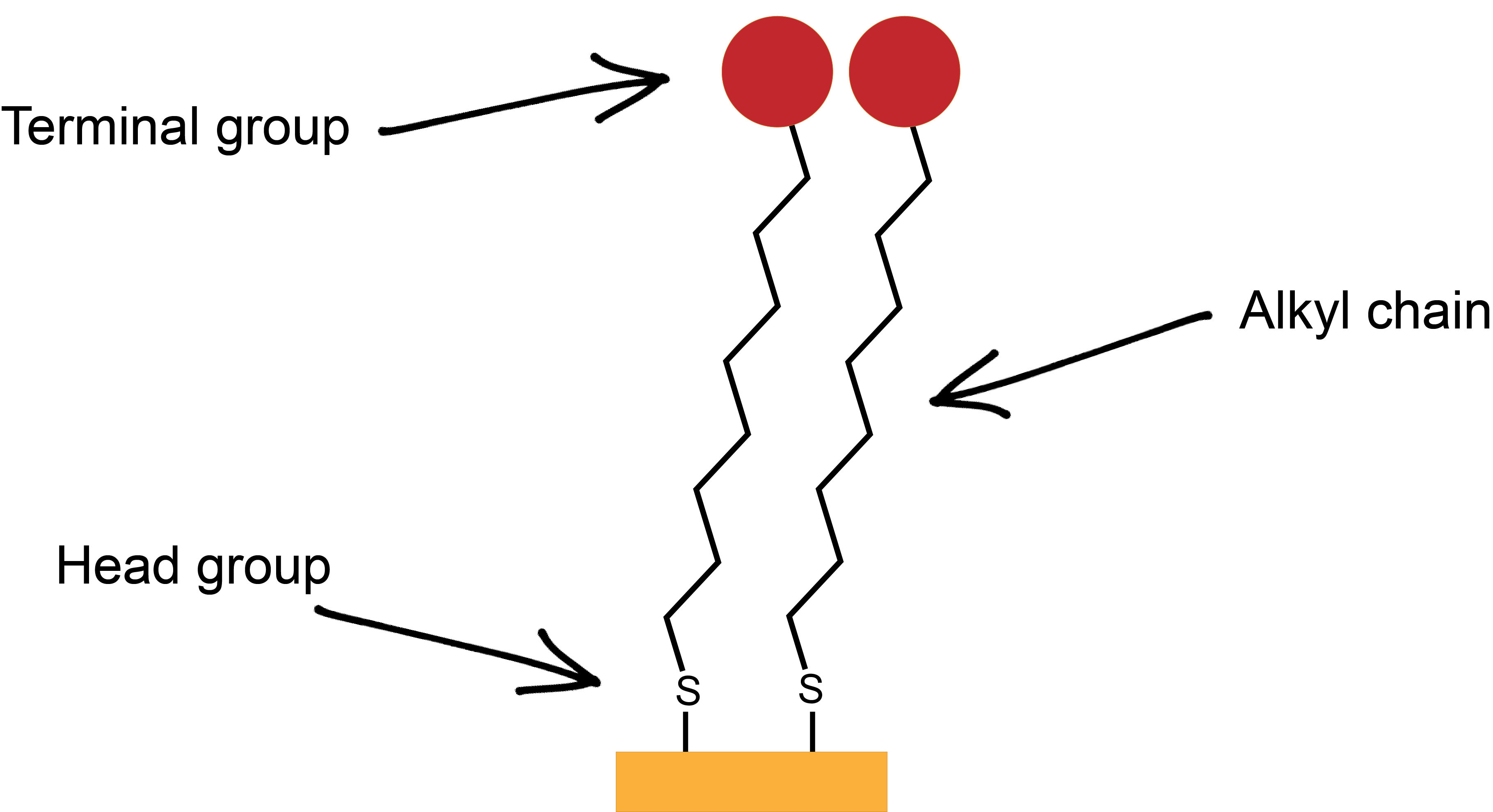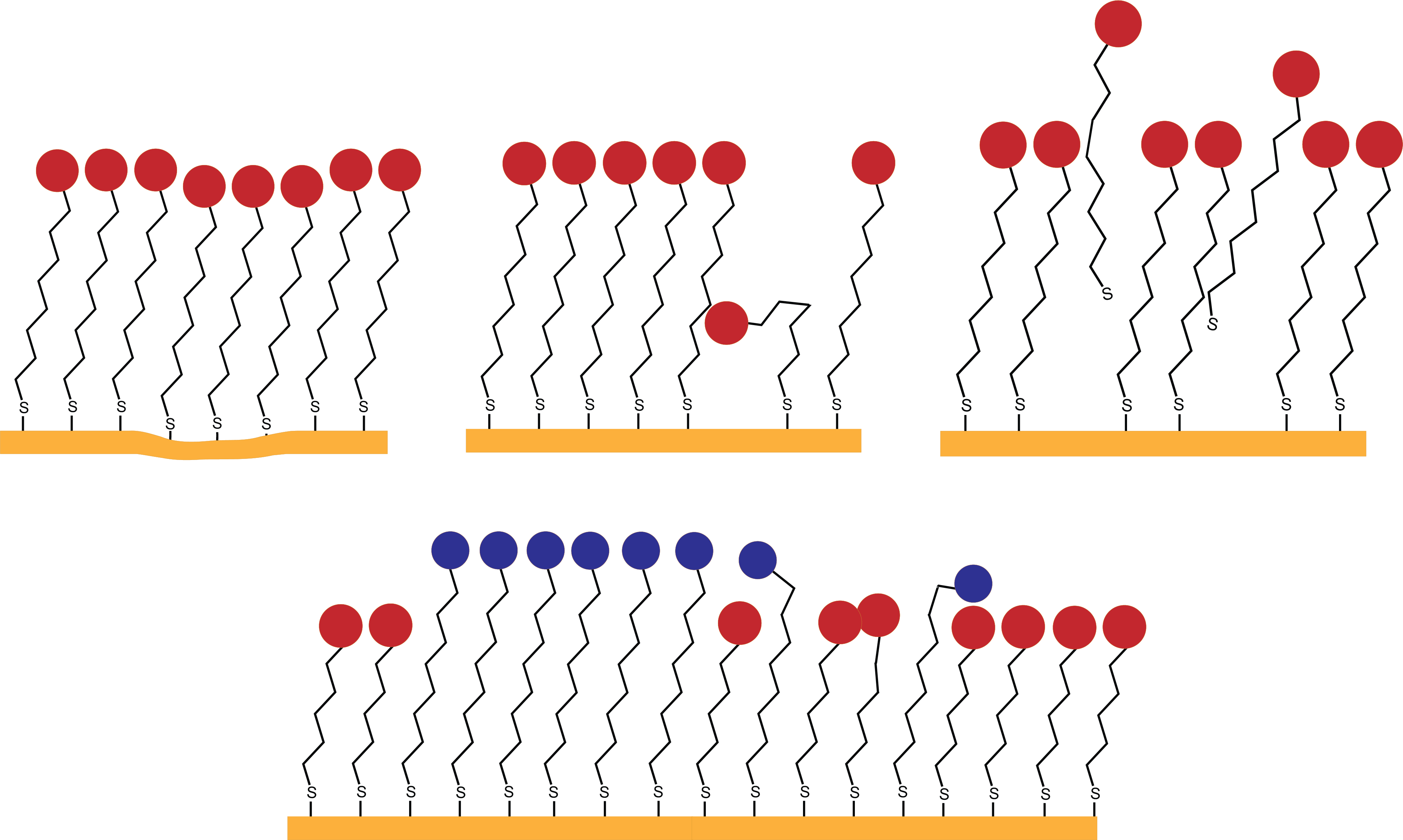Research
Research in the Thompson group focuses on the impact of molecular-level defects on the functionality of biomedical sensors and other nano-scale devices.
The modification on solid interfaces via adsorption of organic thin films has become indispensable in a number of fields because it enables tunable control over surface properties like wettability, friction, corrosion-resistance, and other properties. Control over these properties has in turn led to significant advancements in catalysis, medicine, nanotechnology, and electronics. In biomedical technology, for example, functionalized surfaces have been instrumental in the development of materials for drug screening, immunoassays, and biosensors.
In our group, we are interested in chemical self assembly using alkanethiol-based self-assembled monolayers (SAMs). These handy molecules spontaneously bond to gold surfaces and organize into thin layers with a terminal group of our choosing exposed at the interface. The resulting layers are energetically stable, cost-effective to produce, and typically well-organized. If we choose an appropriate terminal group that interacts (chemically or otherwise) with a protein or catalyst of interest, we can use the functionalized surface to trap that special molecule from solution.

So why aren’t we making every device out of SAMs? One reason is that we still lack fundamental knowledge about
how the surface is truly organized under operating conditions and how that correlates with performance indicators like sensitivity and stability. And though SAMs are generally well-organized, the molecular level picture is often much more complicated. Surface defects in the underlying gold, the type and length of the thiols used, and other environmental factors can lead to a more disorganized, heterogeneous layer. It is difficult enough to diagnose these issues, let alone predict how they will influence processes like sensor selectivity.

Current Projects:
- Mixed SAMs with biosensing applications
In this project we are exploring the impact of including multiple different terminal groups in a single monolayer on biosensing capability. “Mixed monolayers”, as they are called, afford additional tunability to the surface, and it is often beneficial to dilute the active (sensing) terminal group in an inactive component. Mixed monolayers are tricky, however, and we are trying to determine what factors (mixing ratio, terminal group selection, and more) impact the molecular-level organization of the SAM and it’s performance at picking up simple blood proteins from solution.
- Heterogeneous catalysis with Cu(II) complexes and SAMs
In this interdisciplinary project, we are interested in tethering copper catalysts to different mixed SAMs to study the behavior of this well-known catalyst system in a heterogeneous, surface-bound configuration. SAMs are a reliable and well-studied avenue for catalyst immobilization at solid interfaces. The challenge, however, is utilizing the SAM structure to maintain or even enhance the sensitivity and selectivity of the catalyst. This requires detailed knowledge of how the catalyst binds to the surface: orientation, retention of configuration, steric interactions with the monolayer, and lability under reaction conditions.
Our instrumentation:
See photos and more details about our instrumental techniques here